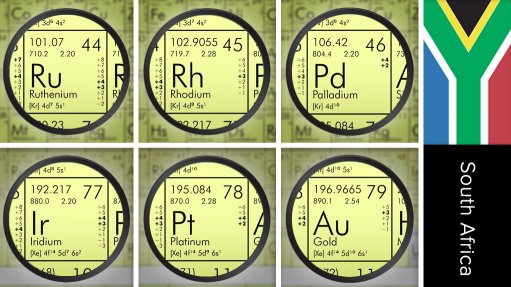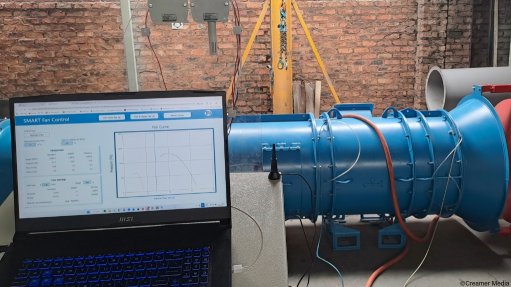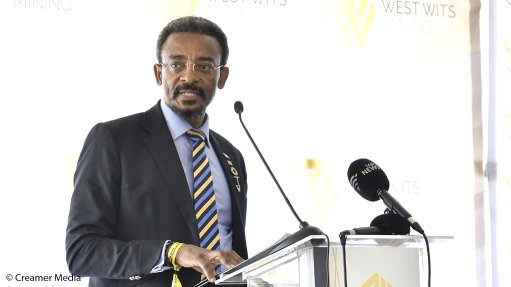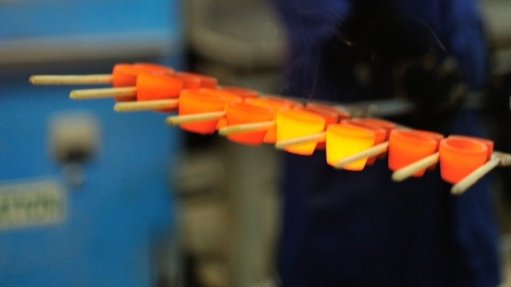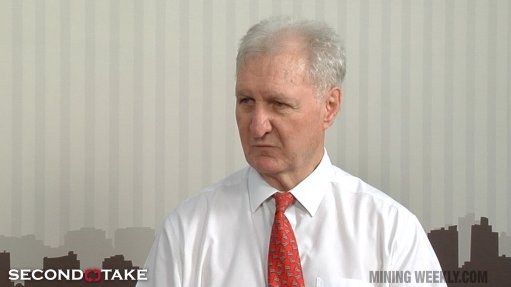Manufacturers must increase export potential – export council


South African Capital Equipment Export Council CEO Eric Bruggeman discusses the state of the sector
ERIC BRUGGEMAN Using platforms such as the Electra Mining and the Local Southern African Manufacturing Expo is part of SACEEC's inward buying mission
Igniting investor relations and export potential, as well as increased investment in projects, are paramount to gaining traction when trying to reignite the economy post Covid-19, stresses South African Capital Equipment Export Council (SACEEC) CEO Eric Bruggeman.
He highlights the opportunities that were available at this year’s Electra Mining Africa 2022 expo, which was held at the Johannesburg Expo Centre in Nasrec, Gauteng, from September 5 to 9.
“This year’s event has been successfully used as a showcase of South Africa’s manufacturing and export capabilities and was the perfect opportunity to invite prospective clients or investors to South Africa.”
The expo was also a platform for companies to showcase new innovations and technologies that have not been adequately capitalised on or marketed, owing to the global pandemic.
Bruggeman was selected as a panellist for the Electra Mining Innovation Awards, held on the evening of September 9.
The aim of the awards was to effectively highlight South Africa’s ability to design and manufacture world-class products.
SACEEC engaged with international delegates from countries – such as the Netherlands, Russia, Peru, Chile and Ecuador – who were invited as guests of the council at the event.
African countries, such as Zambia, the Democratic Republic of Congo, Ghana and Kenya, have also shown interest in upcoming trade expos in South Africa.
“Using platforms such as the Electra Mining and the Local Southern African Manufacturing Expo is part of SACEEC’s inward buying mission, and a drive for localisation in the manufacturing space,” Bruggeman enthuses.
Not only do the concepts of inward buying and localisation create jobs, drive investor relations and showcase a country’s abilities, they also improve the economy.
These concepts, coupled with a notable interest in the regional North-South Corridor (NSC), will strengthen exports into Africa, he notes.
The NSC was designed as a transit and transport value chain and to address transport constraints in a sequenced and multi-modal way.
The NSC programme comprises inter-related projects that address road infrastructure; road transport facilitation; management of railway systems and rail infrastructure; physical and procedural improvements at border crossings; port infrastructure; management of air transport; and energy interconnectors.
Tough Ask
Bruggeman stresses that the manufacturing and export sectors face several challenges that need to be addressed as a matter of urgency.
He affirms that the power crisis is the primary element negatively affecting manufacturing, while the state of South Africa’s ports and transport infrastructure is affecting its export capabilities.
“Local manufacturers need a constant supply of power to maintain machinery uptime
yet we sit with between two and eight hours of downtime a day.”
Bruggeman adds that the solar and wind projects being suggested by government need to be fast-tracked to help alleviate the problem.
It is “disheartening” that South Africa’s ports rank as some of the least efficient globally, owing to a lack of infrastructure, materials handling equipment and logistics capacity to and from the ports, he laments.
“South Africa’s ports need to be adequately maintained and upgraded to offer prospective investors and international clients the assurance that products will arrive at their destination on time and intact.”
Further drawbacks include the recent trend of truck strikes, the riots in KwaZulu-Natal in July 2021, and the long-standing issue of black economic empowerment.
“Raw materials, or rather the lack of readily available, well-priced raw materials, is damaging the manufacturing sector,” he says.
South Africa should –by way of recycling and reusing –be able to cater to the majority of manufacturers’ raw materials requirements, without importing materials and parts.
Consequently, through recycling and reusing metals, an increase in jobs, upskilling of workers and decrease in manufacturing turnaround times will be facilitated.
For this, industry stakeholders and government facilitators, in collaboration with the Department of Trade, Industry and Competition (DTIC) have laid the foundation for The South African Steel and Metal Fabrication Master Plan 1.0.
Initial estimates indicate that about 200 000 t – and possibly up to 500 000 t – of imported final products a year could be replaced, generating about 800 direct jobs and adding about R7-billion a year to South Africa’s gross domestic product.
Bruggeman says a focus on the construction, automotive and mining industry manufacturing space is most important in development of the steel and engineering industry.
Notably, imports have gained an increasing share of the market in the manufacturing and automotive sectors of the steel industry.
“But the Master Plan, although in its infancy, needs to be taken to the next level of implementation as soon as possible, and not remain merely a plan indefinitely,” stresses Bruggeman.
He notes that SACEEC has open communication channels with the DTIC and the
Export Credit Insurance Corporationof South Africa to assist investors and clients with preshipment finance, and with any possible export issues.
“As a council, we continue to promote localisation and exports through all our channels and we believe that exports and manufacture are crucial to South Africa’s future,” he concludes.
Article Enquiry
Email Article
Save Article
Feedback
To advertise email advertising@creamermedia.co.za or click here
Press Office
Announcements
What's On
Subscribe to improve your user experience...
Option 1 (equivalent of R125 a month):
Receive a weekly copy of Creamer Media's Engineering News & Mining Weekly magazine
(print copy for those in South Africa and e-magazine for those outside of South Africa)
Receive daily email newsletters
Access to full search results
Access archive of magazine back copies
Access to Projects in Progress
Access to ONE Research Report of your choice in PDF format
Option 2 (equivalent of R375 a month):
All benefits from Option 1
PLUS
Access to Creamer Media's Research Channel Africa for ALL Research Reports, in PDF format, on various industrial and mining sectors
including Electricity; Water; Energy Transition; Hydrogen; Roads, Rail and Ports; Coal; Gold; Platinum; Battery Metals; etc.
Already a subscriber?
Forgotten your password?
Receive weekly copy of Creamer Media's Engineering News & Mining Weekly magazine (print copy for those in South Africa and e-magazine for those outside of South Africa)
➕
Recieve daily email newsletters
➕
Access to full search results
➕
Access archive of magazine back copies
➕
Access to Projects in Progress
➕
Access to ONE Research Report of your choice in PDF format
RESEARCH CHANNEL AFRICA
R4500 (equivalent of R375 a month)
SUBSCRIBEAll benefits from Option 1
➕
Access to Creamer Media's Research Channel Africa for ALL Research Reports on various industrial and mining sectors, in PDF format, including on:
Electricity
➕
Water
➕
Energy Transition
➕
Hydrogen
➕
Roads, Rail and Ports
➕
Coal
➕
Gold
➕
Platinum
➕
Battery Metals
➕
etc.
Receive all benefits from Option 1 or Option 2 delivered to numerous people at your company
➕
Multiple User names and Passwords for simultaneous log-ins
➕
Intranet integration access to all in your organisation








